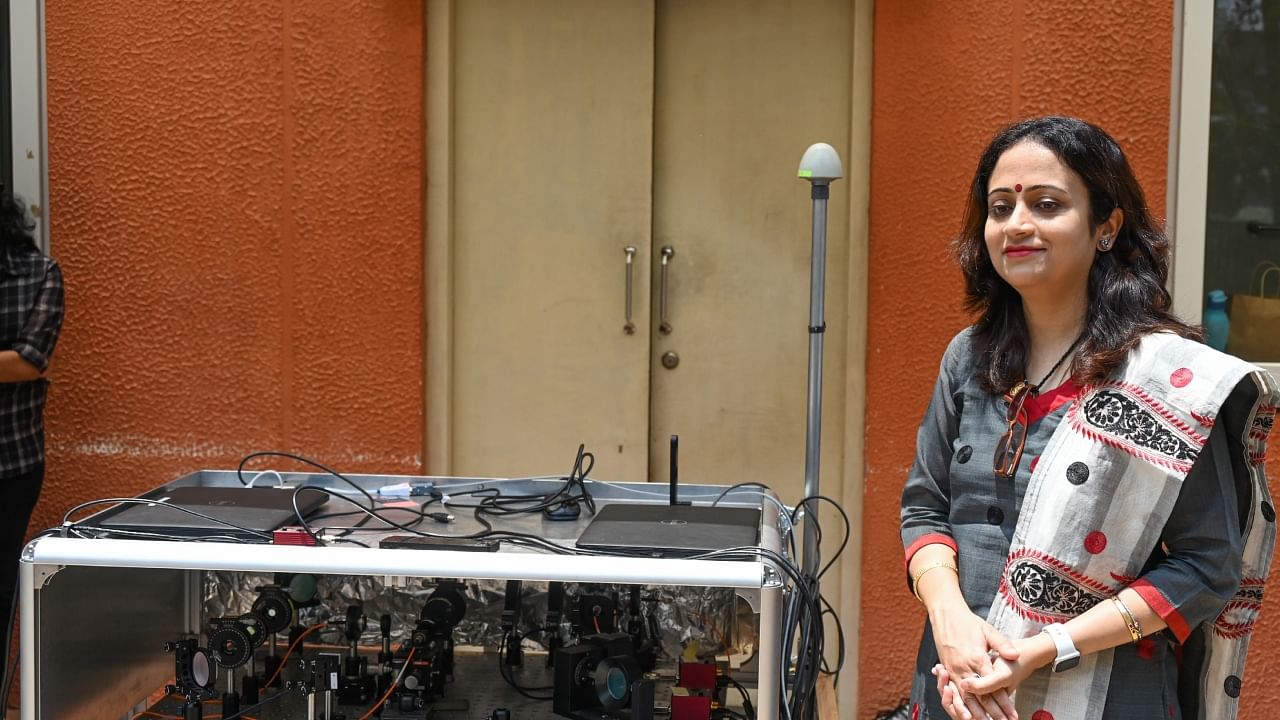
Researchers at the Raman Research Institute (RRI) have successfully established secure communication between a stationary source and a moving receiver using Quantum Key Distribution (QKD), in what the institute announced as a first-of-its-kind demonstration in India.
QKD allows a secure form of communication in which only the parties involved share keys that are used to encrypt and decrypt messages. The demonstration is significant for its possibilities in ground-to-satellite-based secure quantum communication, and in helping India develop secure systems across domains – from defence and cyber security to voting machines and online transactions.
Quantum communication ensures secure information channels through quantum cryptography which mitigates the risk of breaches in the encryption-decryption model that is followed in classical cryptography.
Prof Urbasi Sinha who led a team of researchers at RRI’s Quantum Information and Computing lab said on Saturday that the successful experimental demonstration was performed at the institute in early March.
The work is part of Quantum Experiments using Satellite Technology, a collaborative project RRI has with the UR Rao Satellite Centre of the Indian Space Research Organisation (Isro), since 2017.
Solutions from space
Prof Sinha said engaging satellites was the way forward in expanding the scope of quantum communication, with the satellites acting as “trusted couriers” for communicating messages across long distances.
In this scenario, the ground station is required to keep the line of sight with the moving satellite. The team deployed an indigenously developed Pointing, Acquisition and Tracking (PAT) system that assisted the ground-based source in tracking the moving receiver, a terrestrial vehicle, a few metres apart.
The moving vehicle was built and aligned to the receiver module (nicknamed Bob) with attendant optics, opto-mechanics and electronics, all working in tandem with the time synchronisation solutions.
The idea was to put together a terrestrial demonstration to validate viability of the model with a moving satellite. “Our colleagues at Isro advised us that in order to mimic a satellite, we needed to move the receiver along a circular pattern,” Prof Sinha said.
This is the first time in India that the PAT system is used to establish secure QKD between a stationary source and a mobile receiver, the institute said.